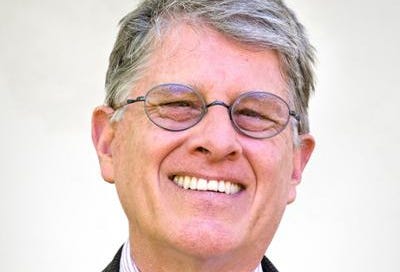As we mentioned last time, Day Four seems to be the day in the second half of Creation Week that corresponds to Day One, the day in the first half of Creation Week when light was created.
The big difference, of course, is that now we perfectly understand how there can be an evening and a morning. There is a sun, to set in the evening and to rise again the next morning. Somehow this effect was achieved, up until now, by the light created on Day One.
I will leave it to the people in the physics department to figure out how the Day One light might interface with the lights created on Day Four, which are obviously the same ones we now see in the sky, if both existed at the same time. Suffice it to say that Jewish tradition understands that the otherworldly light from Day One was a special creation that no longer exists — or rather that it still exists but is hidden away.
I’ll confess that I have no idea what the original writer of Genesis 1 intended us to think about morning and evening before the sun was created. I presume that the 6 + 1 days of Creation Week are an organizing principle rather than a series of factual notations. I suggested when we first looked at Day One that the creation of light and its separation from darkness to yield Day and Night implied that Day One was intended to mark the creation of time.
But what was the nature of that original light? If, like me, you are interested in how our universe really was created, you know where to learn more about it — through astrophysics and the study of the Big Bang and the background microwave radiation it left behind. “The Sky recounts the glory of God and the cupola tells His handiwork” (Ps 19:2). If I were running a religious seminary, I’d make sure all the students did their best to understand what the Sky is telling us.
But as we saw on Day One and on Day Three, Jewish tradition likes to use these speed bumps in the story for its own purposes. At their best, rabbinic sources do three things at once:
They resolve difficulties in the text by connecting two texts from different places in the Bible.
They unite them by filling in the gap between them with a newly invented sequence of events.
They communicate a moral, ethical, or spiritual value with their new creation.
In today’s case, the far-away verse we’ll connect with Genesis 1 comes from the book of Psalms:
Light is sown for the righteous • Psa. 97:11 • א֭וֹר זָרֻ֣עַ לַצַּדִּ֑יק
What is this light, and what does it mean that it was “sown” for the righteous? Two of the most prominent public-facing rabbis of the 20th century, drawing on rabbinic sources, will lead us to the answer. First, Jonathan Sacks, the late Chief Rabbi of the United Kingdom:
Abraham Isaac Kook (1865–1935) was the first Ashkenazi chief rabbi of the British Mandate for Palestine, the founder of the Religious Zionist Yeshiva Merkaz HaRav, Jewish thinker, Halachist, Kabbalist and a renowned Torah scholar.
The outbreak of the First World War caught Kook in Europe, and he was forced to remain in London and Switzerland for the remainder of the war. In 1916, he became rabbi of the Spitalfields Great Synagogue (Machzike Hadath, "upholders of the law"), an immigrant Orthodox community located in Brick Lane, Whitechapel.
He quotes R. Kook as follows:
When I lived in London, I would visit the National Gallery, and the paintings that I loved the most were those of Rembrandt. In my opinion Rembrandt was a saint. When I first saw Rembrandt's paintings, they reminded me of the rabbinic statement about the creation of light. When G-d created the light [on the first day], it was so strong and luminous that it was possible to see from one end of the world to the other. And G-d feared that the wicked would make use of it. What did He do? He secreted it [that is, “sowed” it] for the righteous in world to come. But from time to time there are great men whom G-d blesses with a vision of that hidden light. I believe that Rembrandt was one of them, and the light in his paintings is that light which G-d created on Genesis day. [Jewish Chronicle, 9 September 1935]
I believe the painting Rav Kook saw was Rembrandt’s “The Sacrifice of Isaac,” illustrating Gen 22:11. Reproductions never quite do justice to a painting, but you can see that light in this painting, on the website of the Hermitage Museum, where it’s now kept. (The painting is also briefly visible in the very strange and absorbing film by Aleksandr Sokurov, “Russian Ark.”) I saw it in Boston, where it must have travelled on exhibition, and when I walked into the room I could not believe the exhibitors had installed a Rembrandt where direct sunlight could fall on it — but when I turned to see where the light was coming from, I realized that it was coming from the painting.
May we all see the light that Rembrandt saw!
And now, onward to Day Five.



